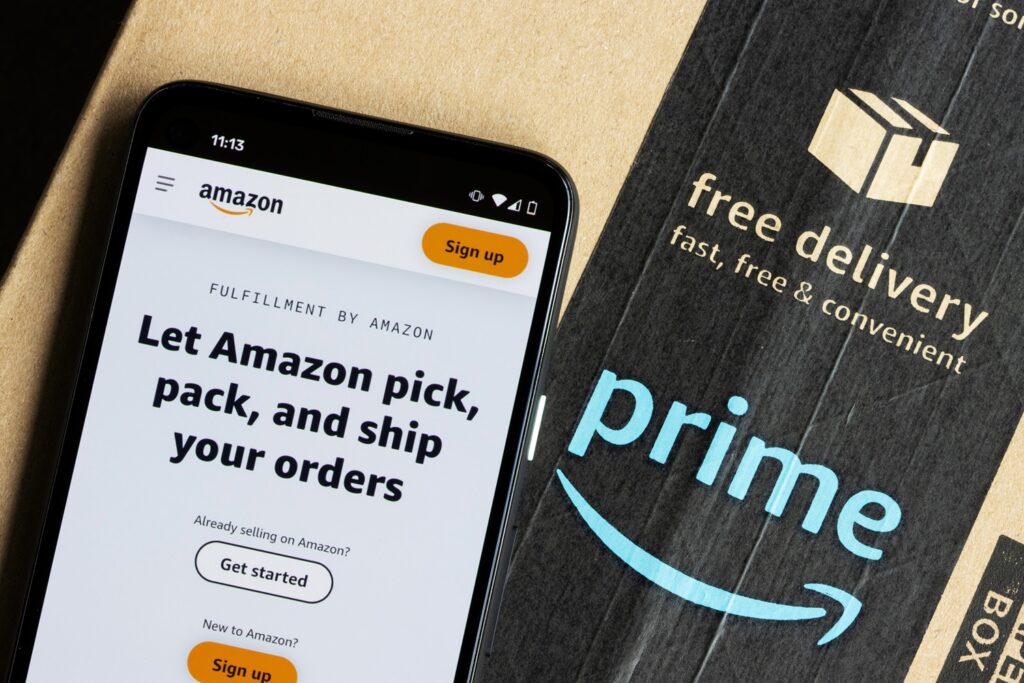How Long Does It Take For Amazon PPC To Work?

The Amazon Pay-Per-Click (PPC) tool is a popular marketing and income generating tool when selling products online. Essentially, it’s an advertising tool, facilitated by Amazon, which enables online vendors to create adverts linking to their products. It’s cost-effective as vendors or sellers only end up paying for the number of clicks through to their product the advert draws in.
Campaigns can be highly effective when done right, and most users will hover over their keyboards and computer monitors waiting to see results. Understanding how long it takes for an Amazon PPC to work will save you precious business time and allow you to focus on other aspects, like obtaining customers and actually moving products off the online shelf.
Factors affecting how long Amazon PPC takes to work
Several factors influence Amazon PPC campaigns as they are highly dependent on how your adverts are optimised and how well you understand your target audience or industry space. You should use the following factors in your PPC performance metrics to get a good overview of your PPC campaigns.
Budget
The online advertising space is highly competitive, especially within the fields of SEO and paid ads. Search engines, and indeed Amazon, do boost ads if they are simply paid more. So, the amount of budget you have for a specific advert drastically influences your PPC campaign performance. As a general rule, the higher your online advertising budget the faster you’ll start seeing results in customer reach.
Quality
One of the most important aspects of any advert is its appearance. For an advert to be compelling, you need to take the time to source high-quality images and relevant content. Understanding what makes an advert relevant comes from knowing the audiences you want to target.
You’ll inevitably gain more traction within your specific target audiences by conducting some market research before launching an Amazon PPC campaign. Amazon sellers should also note that trying to penetrate an entirely different market or industry will naturally take longer as new audiences take time to adapt to new products or concepts, regardless of ad quality. This is just human nature.
Demand
You can ascertain the demand for your Amazon product, again, by conducting market research before opting for a PPC campaign. The demand for your product certainly influences how quickly audiences begin engaging with your adverts. If your product is in high demand, you’ll likely see results a lot quicker. However, lower-demand products generally won’t perform as well.
Competition
You need to determine your main competitors and lean into what separates your business and product from them. Once you’ve got a firm grasp on your unique selling points (USPs) it makes it a lot easier to create quality adverts that perform well.
As such, the level of competition also influences the speed of ad uptake. If your competitors consistently throw more budget at their PPC campaigns, as larger companies generally do, they’ll probably outperform you in this regard. However, if you outweigh them in terms of quality and overall brand reputation, then harnessing these aspects can help boost PPC results.

Targeting
It’s a common misconception that creating a PPC campaign is simply about putting an advert out into the ether and seeing who’s interested. This could not be more flawed. Audience targeting should be a calculated decision. When setting up your advert, you can classify your target audience according to their locations, specific demographics, and likely interests. The more accurate and specific your targeting is, the quicker you’ll see PPC results.
How long it takes to see results on your Amazon PPC campaign
When you launch an Amazon PPC campaign you need to be prepared for a varied timeline. Taking the above factors into consideration will help with timeline estimations, but you should also look at the mechanics of PPC campaigns.
As with any paid online ad, the initial phase is about learning. This phase is where Amazon collects data from various performance metrics and begins to optimse them accordingly, in line with your allocated budget.
Because of the learning and data collection phases, sellers must accept PPC campaigning as a long-term marketing and advertising strategy. Sellers should also break up their expectations into different time segments. The below gives you an idea of what your typical expectations should be:
- Visible short-term results: 1 – 2 weeks
- Visible medium-term results: 1-2 months
- Visible long-term results: 3-6 months
Getting to grips with these specific timelines will certainly help you manage campaign expectations and, therefore, projections too.
If you’ve been looking into Amazon PPC campaigns, then you may have also come across the term “attribution window”. The below gives a more detailed explanation of this concept.
The attribution window
Of course, the main point of a PPC campaign is to drive more sales. In some cases, a customer may click on the ad and make the purchase immediately. But, more often than not, this is not the case. Actual purchases can take days or weeks to complete, even after seeing the ad. The attribution window is, therefore, the length of time between an ad click and a purchase and is used to ascertain whether a purchase is attributable to a clickthrough from an advert.
On Amazon, the attribution window is seven days for individual products and 14 days for brands or companies creating adverts for their Amazon store containing multiple items. You need to understand the attribution window, as it directly affects your Amazon PPC spend and billing.
How to optimise your Amazon PPC campaign
We’ve spoken about how quality directly influences the success and result yield of your PPC campaign. Optimising your advert can help to organically boost your adverts and therefore, speed up seeing visible results. Below are some of the techniques you can use to optimise your Amazon PPC ads and gain good returns on your investment.
Keyword research and integration
One of the key strategies derived from SEO strategies is keyword optimisation. Building a list of the right keywords used in customer search phrases will help you to understand what it is customers want and what they query in search engines, whether browsing the web or Amazon specifically.
You can use several programmes to determine which keywords perform well in given contexts. These programmes also provide insights into how your competitors’ keywords perform and, therefore, can guide you in ad campaigns.

Getting your target audience right
Understanding your target audience is a combination of market research, and using your industry understanding to build audience empathy. This, ultimately, will give you the knowledge you need to get your target audience right, understand what they want, and deliver an advert that will attract their attention. Consider what matters to them and why they would want to purchase your product.
Creating good ad copy
There’s nothing worse than reading a generic or disingenuous advert that you simply cannot relate to. When creating PPC ad copy, then you need to put yourself in the shoes of your target audience. Good ad copy also naturally integrates high-performing target keywords. This will make your advert rank higher on Amazon and search engines.
Consistent tracking and campaign monitoring
As with any online marketing and advertising campaign, monitoring our adverts’ performance will give you clear indications of what is working and what can be improved, helping you refine and optimise your ad campaigns accordingly. Some of the key metrics you should keep track of include:
- Ad impressions: This is the number of people who have seen your ad and also gives you information on where the advert was seen.
- Number of clicks: You need to keep tabs on how many clicks your PPC campaign generated to ensure that your budget and projections align.
- Click-to-purchase conversion rates: This metric provides insights into how many clicks result in purchases, with the attribution window considered.
- Advertising Cost of Sales (ACOS): This is how much money you need to spend on advertising to generate a sale.
- Return on Ad Spend (ROAS): This metric allows you to determine whether or not your campaigns were financially effective and helped you generate a profit.
Monitoring your PPC campaigns according to these metrics will ensure you consistently deliver campaigns that work.
Competitive bid setting
Staying competitive in your bids will allow you to rank up there with your competitors but you also need to make sure you remain within budget and spend effectively to ensure you get a good ROI. Higher budgets will see quicker PPC results, but ineffective adverts will cost more money and not generate returns.
Monitoring and adjusting your campaigns
We’ve spoken about the metrics you need to keep an eye on to effectively monitor your campaigns, but how do you go about making the right adjustments using the information you have? Some of the common adjustments you can make include:
- Making amendments to the ad copy to optimise it or make it more relevant
- Changing ad settings like adjusting audience demographics, budgets, and visibility.
- Adjusting the amount of money you spend on certain bids.
Sellers should adhere to best practices to ensure their campaigns are performing optimally. Regularly reviewing key metrics like click-through rates, conversion rates, and ACoS allows sellers to promptly identify trends and areas for improvement. Identifying and adding low-performing or irrelevant keywords as negative keywords helps prevent wasted ad spend.
Testing different ad copy is good practice and provides different targeting options enabling sellers to refine their strategies based on what resonates best with their audience.
By avoiding common mistakes such as expecting immediate results, targeting the wrong audience, and neglecting regular campaign optimisation, sellers can enhance their Amazon PPC campaigns for more sustained success. Making data-driven decisions and implementing these best practices can significantly improve campaign performance and drive better results in Amazon PPC campaigns.

Making Amazon PPC work for you
Nailing an Amazon PPC campaign can be tricky, and you may grow impatient when waiting for results. However, if you follow this guide and nurture your PPC campaigns properly, you will start seeing results in less time.
For professional advice and expert Amazon PPC monitoring, get in touch with Mercatus today. We are always on hand to provide you the support and structure you need to execute effective PPC campaigns and drive sales on the Amazon marketplace.


